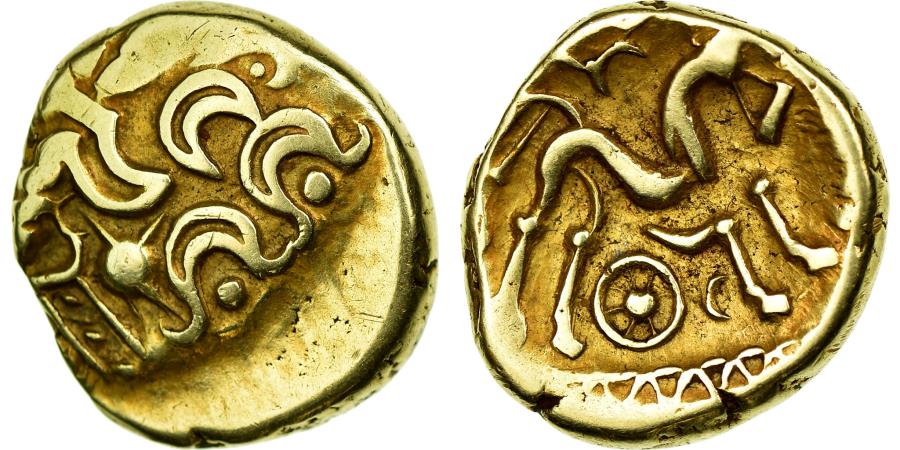

VERIC (VE ligate) to right of laureate male head right, (copied from a denarius of Tiberius).

C dot F within torc with dots as terminals. van Arsdell 470-477 Rudd, Ancient British Coins 1223 Bean VERC1-3. Boar running right, star above, VIRI below. COM.F dot and inward-facing crescent above and below. VA 409-1.Ĭeltic Britain, Regini and Atrebates. Seaby 70 BMC 759-7 Van Arsdell 358-5.Ĭeltic Britain, Atrebates, Eppillus. Horse standing left, dot in circle above and below. Celticized head left, curved ladder-shaped hair, eye as a dot in circle. Horse running left, wheel above, dot in circle below. Concave square with for dot in circles around and one in the centre. Van Arsdell 292-1.Ītrebates, Commius AR Quarter Unit, 50-25 BC. Celticized horse right, rings before and beneath the horse, fanlike shape beneath the horse. Celticized head left in outline form, three dots before the mouth, corded lines as hair. VA 228-1.Ĭeltic Britain, Atrebates, AR quinarius. Abstracted head right of Apollo / Celticized horse right. Van Arsdell 222-1 BMC 489-494 Seaby 48.Ĭeltic Britain, Atrebates. Celticized horse right with triple-tail, beaded mane, floral sun (dahlia ?) above, cog wheel below, dot-in-circle to right. Abstract head or wreath pattern, resembling a radiate head right. Seaby 1-1586 Rudd ABC 1337 VA -.Ītrebates, AV quarter-stater, "Remic" Type, ca. VE beneath eagle standing front, head left, wings spread. VERICA COMMI F around large central ring (shield?). Hobbs 1217 Van Arsdell 468-1 SCBC 126.Ĭeltic Britain. Horse galloping right VIR above, dot in circle below. Hobbs 1207 Van Arsdell 467-1 SCBC 125.Ĭeltic England. Van Arsdell 387-01 Seaby 124.Ĭeltic Britain. Hobbs 1146 Van Arsdell 500-1 SCBC 120.Ītrebates, Celtic Britain. Warrior, holding spear, on horseback right. 50 BC to 50 AD, tin unit, (1.25g) Crude head right. Hobbs 468 Van Arsdell 216-1 SCBC 38.īritish Celts, Atrebates, Thames and South, uninscribed, ca. Horse galloping right with triple tail, degraded charioteer above (resembling a scorpion) six-spoked wheel and crescent below, crescent to left. Head right / Horseman to right.Ĭeltic Britain. VERICA REX, bull butting right / COMMI F, figure standing left, holding branch, head on standard to right. Van Arsdell -.Ĭeltic Britain, The Atrebates. Celticized horse running right, floral sun above, wheel below, dots in annulets around. Celticized head of Apollo right with "hidden face" motif. ABC 2368 Van Arsdell - BMC - Seaby -.Ĭeltic, Britain. Horse right, beaded mane, dot and winged motif above, cogwheel sun below. Vertical double line with dots between, two or three crescents below, dot in circle and horizontal leaf to right. ABC 2368Ītrebates, AV quarter-stater, Harlow Flyer Type, ca.

(ed.) Colchester Archaeological Report 4: The Coins from Excavations in Colchester 1971-9.Britain, Atrebates - Ancient Celtic Coins - īrowse the Atrebates page with thumbnail images. ^ a b Crummy, Philip (1987) The Coins as Dating Evidence.Published by Colchester Archaeological Trust ( ISBN 1 897719 04 3) ^ Crummy, Philip (1997) City of Victory the story of Colchester - Britain's first Roman town.: CS1 maint: archived copy as title ( link) The Oxford Celtic Coin Index Cardiff: University of Wales Press, 2002. A history of money from ancient times to the present day, 3rd ed. ^ Cache of Celtic Coins Uncovered in Dutch Cornfield Archived at the Wayback Machine.^ Celtic Inscriptions on Gaulish and British Coins" by Beale Poste p.135.^ School of Archaeology, University of Oxford "Coinage in Celtic society".^ a b c d e f g Celtic culture: a historical encyclopedia" John T.With the Roman invasion of Gaul, Greek-inspired Celtic coinage started to incorporate Roman influence instead, until it disappeared to be completely replaced by Roman coinage. They were produced by pouring molten alloy into a set of molds which were broken apart when the metal had cooled. Casting a coin required a different technique. The tiny details engraved on dies were just a few millimeters in diameter. After forming the blank, it would have been flattened out before striking with a die made from iron or bronze. Striking a blank coin formed in a clay mould was one way. Both methods required a substantial degree of knowledge. The coins were either 'struck' or 'cast'. The Boii gave their name to Bohemia and Bologna a Celtic coin ( Biatec) from Bratislava's mint is displayed on a Slovak 5 koruna coin, which was in use until Slovakia joined the euro zone on January 1, 2009.Ī tribe of Celts called Eburones minted gold coins with triple spirals (a Celtic good luck symbol) on the front, and horses on the back. Celtic cointype "Divinka" from Divinka in Slovakia.


 0 kommentar(er)
0 kommentar(er)
